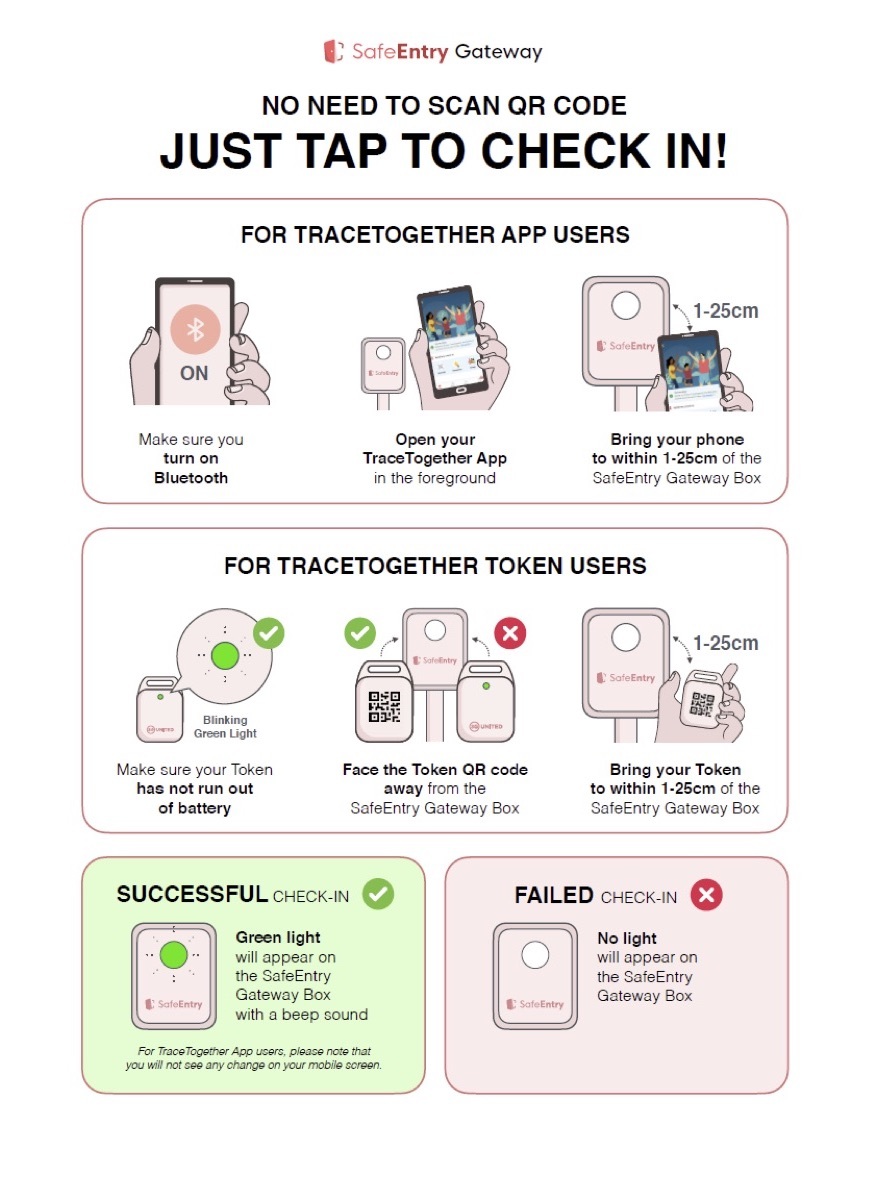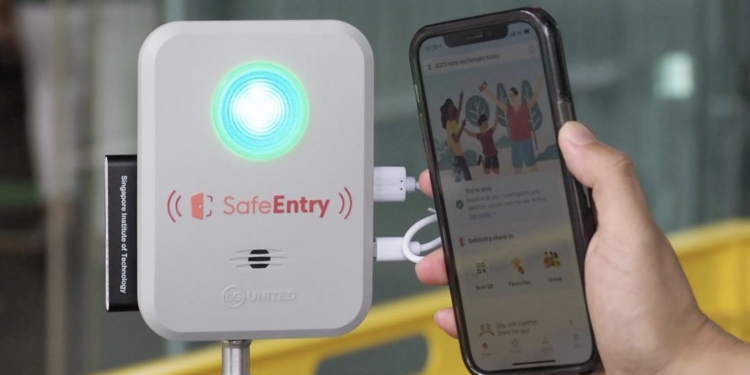Starting 19 April 2021, Singapore’s venue operators with high human traffic flow would need to install a SafeEntry Gateway device that helps check in patrons. But how is it different from Malaysia’s MySejahtera system?
How SafeEntry works

SafeEntry is basically the “MySejahtera” of Malaysia, as it’s their national digital check-in system that logs the particulars of individuals visiting public places for the purpose of contact tracing. The SafeEntry Gateway device—however—lets their public check into places by tapping their mobile phone or a TraceTogether contact-tracing token near the receiver.
There are other modes of checking in like the MySejahtera-style QR code scans for people who prefer to use them, or for those who have older mobile phones that aren’t compatible with the SafeEntry Gateway. People are also able to present their official ID for staff to check you in—as well as other cards issued by the Ministry of Manpower.
However, the SafeEntry Gateway itself lets people bring their TraceTogether tokens within 1cm to 25cm of the Gateway receiver or mobile device at a check-in counter. You can also use the TraceTogether app to bring their phones within 1cm to 25cm of the Gateway to check-in.
The Gateway records check-ins through Bluetooth signals. The Gateway box will then show a green light and lets off a beep—or if its through the operator’s SafeEntry app, a green screen will appear—when the person is checked in.
Locations in Singapore that need to roll out SafeEntry Gateway are places like shopping complexes, supermarkets, cinemas, as well as other places that hold more than 100 people like public libraries, hospitals and places of worship.
Singapore business operators who prefer the SafeEntry Gateway boxes can apply to get up to four of them for free via the SafeEntry website. However, if they need more than four devices, they can file an appeal with the authorities—each box costs SGD 80 (RM245).
How is it better than MySejahtera’s current system?
According to Today Online, visitors to Nex said they “preferred checking themselves into the mall with the SafeEntry Gateway, as it is more convenient”. A 72-year-old retiree said that the device scanned her TraceTogether token “in a matter of seconds”.
Our current system with MySejahtera is still convenient, but it can take a little more than we’d like. This is especially if you’re having trouble trying to find the MySejahtera app on your phone, or if the app suddenly crashes or hangs.
There are also times when I would forget to bring my phone. The only method we have left here would be to write down your details on a log book—which is far from contact-free.
People who don’t have more updated phones, or those who don’t have phones at all like older citizens have resorted to using a stamp to check into locations. Whereas Singapore’s upcoming system will also let you check in using an ID card.
Check-ins will likely be a thing we have to get used to as part of the “new normal”, so a system like the SafeEntry Gateway for Malaysia can speed up the check-in process. The variety of options (that doesn’t involve getting your hands on a grubby notebook) is also pretty good if you forget your phone or token.
Malaysia’s Selangkad offers people a solution for contact tracing that doesn’t involve needing a mobile phone. However, it is currently only for people with disabilities.
[ SOURCE, IMAGE SOURCE ]








